What is Identity
If the first thing you think about when you think “identity” is what is shown on your ID or driver’s license, you’re not wrong. Part of your identity is your name, address and age, but there’s so much more that makes up your identity. Identity includes your beliefs, personality, how you express yourself, your race, gender, religion and much

What does it mean to have a sense of identity?
The idea of “identity” is broad. It means something different to each of us. Having a sense of identity means you are aware of the characteristics that make you uniquely you. Your sense of identity may be evolving and that is part of growing up. A sense of identity can mean you are aware of who you’ve been in the past, who you are right now, and how you think you’ll be in the future.
What are the different parts of identity?
There are many parts of our identity. Two of these are:
Personal Identity
You get to choose and shape parts of your “personal identity.” Personal identity includes hobbies, interests, experiences and personal choices.
Social Identity
There are many parts of who we are that we’re born with. Some of those things stay the same and some of them change over time. They also impact how you see yourself and how others view you. Social identities include race, ethnicity, gender, socioeconomic status and much more.
What is Identity Formation?
Changes in how you think, feel, and express yourself are all part of growing up. This process is part of forming your personal and social identity. It is influenced by a lot of different factors including:
- Your family
- Your culture
- Where you live and go to school
- Your race and ethnicity
- Your sex, gender, and sexual orientation … just to name a few!
How does identity formation cause stress?
We all know growing up is one source of stress. It’s normal to struggle with getting to know who you are. You may be going through big life changes. Maybe you’re expected to look or act a certain way. Or you may be dealing with things that have you questioning how you see yourself.
There is no time limit or normal amount of time that it takes to form your personal identity. What matters is that you become more familiar and comfortable with who you are over time.
Identity and culture can also be helpful for stress management and mental well-being.
Building confidence and pride in yourself and your identities improves self-esteem, which is connected to greater resilience. This helps you feel capable rather than helpless in tough situations. Many people find strength, purpose, and belonging through culture and cultural heritage. Examples include the shared beliefs, teachings, practices, and rituals of your family and broader community.
Our partners at the Indigenous Peoples’ Task Force (IPTF) promote healing and well-being through culture. Watch this video to learn more about their work.** And learn more about Native and Indigenous teachings and practices here.
**This video is possible, fully or in part, as a result of grant funding recommended by the Opioid Epidemic Response Advisory Council (OERAC) and the Minnesota Department of Human Services. The views expressed in this publication do not necessarily reflect the official policies the Minnesota Department of Human services; nor mention of trade names, commercial practices, or organizations imply endorsement by the state of Minnesota.
What is Intersectionality?
Our identities have overlapping parts (think traffic intersection), which are unique to each of us. This overlap is known as “Intersectionality.” The word is used to describe the privileges and disadvantages you face because of that combination.
To fully understand each other, we have to consider all of our unique identities and experiences together.
-
Ubah's Story
Ubah identifies as an African American girl. She was born in the US and her family immigrated here, as refugees, from Somalia. Kids at school treat Ubah differently at times because of the color of her skin, and because she and her family are Somali. Like other girls at school, Ubah sometimes gets treated differently just for being a girl. Even though her family is middle class, they still have trouble paying for things like the family home and other bills from time to time. Since Ubah's parents are originally from Somalia, her family also faces challenges navigating things like the education and healthcare systems in the US.
-
Destiny's Story
Destiny identifies as a Japanese and Mexican American person. Destiny identifies as non-binary and uses they/them pronouns. Their family is working class, and their parents often struggle to pay for things like food and rent and bills—Destiny even works a job to help their family. Destiny also has a disability, which makes it hard for them to participate in activities in the same way as their peers. They often face challenges with having more than one racial identity—like being asked “what are you” and feeling like they don't belong. Destiny does not feel comfortable sharing their gender identity as a non-binary person because they want people to understand and to not make fun of them. Destiny keeps this to their self and goes by the pronouns people assume of them—this is uncomfortable and stressful for them.
-
Ben's Story
Ben identifies as a White boy with Irish heritage. His family is considered upper class, which means his parents make enough money to cover what the family needs, and more. Ben experiences privilege because of these identities. Ben does not experience racism or discrimination based on the color of his skin, and he doesn't have concern for how his parents pay the bills. He does not experience unfair treatment as often as or for the same reasons as his peers. This doesn't mean that Ben doesn't face other struggles or negative experiences; it's just that the struggles are not related to his racial, gender, or class identities.
How does intersectionality relate to stress and identity?
You are more than just one aspect of your identity. Your race, gender and socioeconomic status, for example, are parts of who you are. But they’re not all you are. Intersectionality means your unique combination of identities affects your experiences in life and how the world treats you. This includes your experiences with stress and anxiety.
Use this worksheet to see examples of different students, and to reflect on intersectionality and your own personal experiences.
Sharing with others how you identify yourself
As you become comfortable with who you are and the different parts of your identity, you may want to share your identities with those around you. This may be easier for some than others. Those who identify as LGBTQ+, for example, may not feel safe and supported in their decision to “come out,” or share their sexual orientation and/or gender identity.

Sharing How You Identify
Your description of yourself is how you identify.
For example: Maybe your teacher assumes you are Asian, but you identify as Pacific Islander. Or maybe your parents think you are straight (heterosexual), but you identify as lesbian.
There are parts of our identity people can see and name (yet they don’t always get them right). There’s also many parts of our identity people can’t know without you telling them. This can lead to assumptions, which can be hurtful. Sharinghow you identifyis your choice—you get to choose who, when, and how much you share.
Stress that Comes with Sharing
There are lots of reasons why you may not want to share parts of yourself with others. Maybe you don’t think it’s worth the effort to correct others. Or maybe you want to avoid the possibility of being singled out or made fun of. You may even be afraid of being discriminated against. It can be really stressful deciding how you want to identify yourself around others.
How to Deal
No matter what: how you choose to identify yourself and whom you share it with is up to you. Everyone deserves to be respected and treated fairly no matter how they identify!
- For more resources on managing stress, visit our additional online mental health resources.
- Talk to a trusted adult about the possibility of working with a mental health practitioner or engaging in healing practices practiced by your community. See more: accessing therapy under the age of 18
- When someone feels like they can’t be who they are or share their full selves with others, they may start to experience suicidal thoughts. If you or someone you know is feeling suicidal, learn more about suicide prevention, awareness and support.

